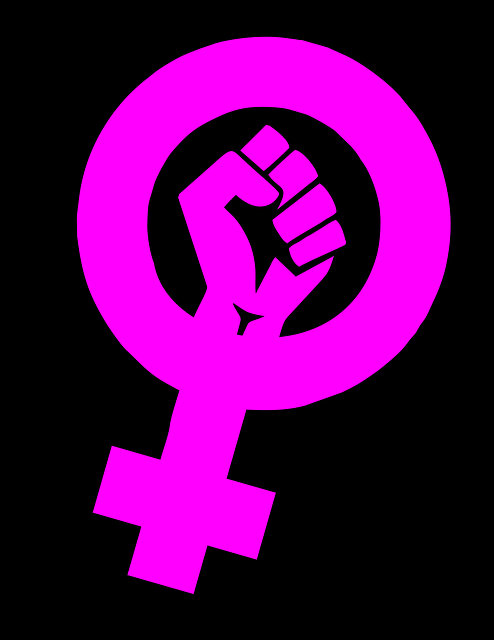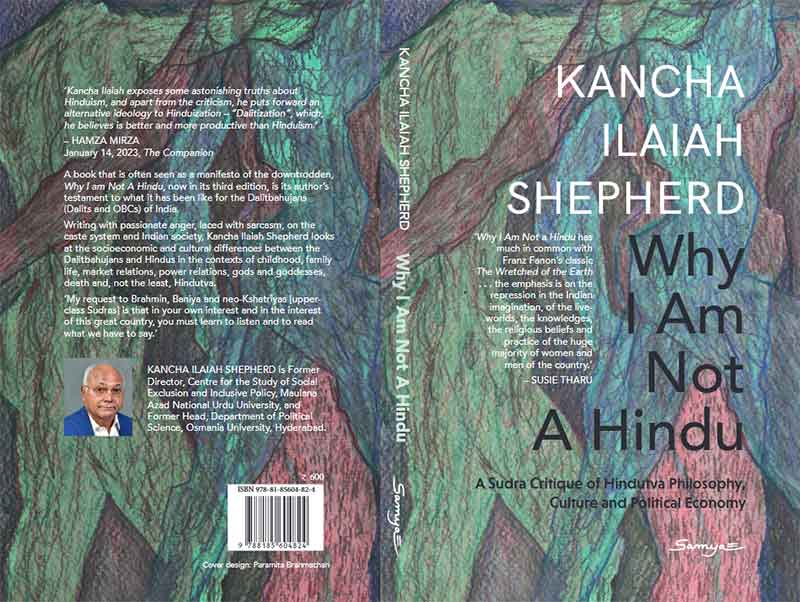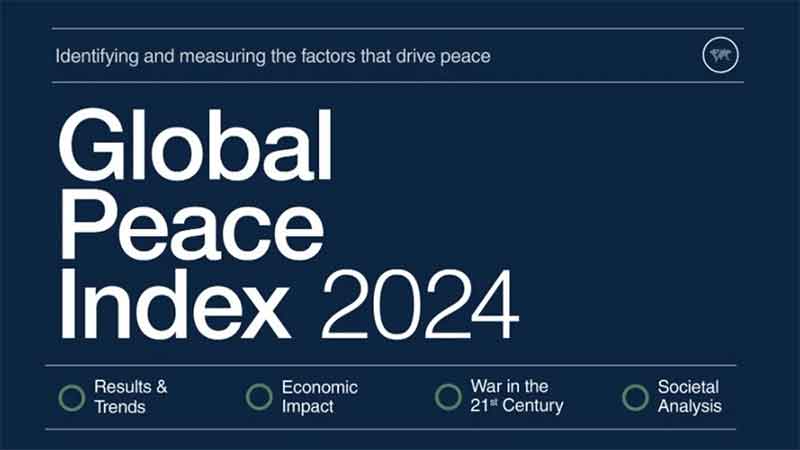
Why Are Misogyny and Patriarchy Universal Phenomena?
A significant thread of Western culture, in which we currently live, can be traced back to Ancient Greece. From there, it was transmitted via the Roman Empire and subsequently overwhelmingly influenced by Christian theology and practice. An examination reveals that misogyny is an integral and indispensable component of relevant creation myths. This legacy of misogyny has been nurtured by the church for over two thousand years, burdening us today like a millstone around our necks. Take, for instance, Pandora—a woman too weak to resist her own curiosity—who opened a box and released innumerable plagues, sorrows, and mischief upon mankind.
Similarly, the creation story from Genesis is equally derogatory to women. There are two conflicting versions of the event. In Genesis 1:27, “God created man in his own image… male and female he created them.” However, in Genesis 2:7, for undisclosed reasons, God created man again, this time from the dust of the ground, and breathed the breath of life into him. Realizing an omission, God anesthetizes the man, removes a rib, and creates a woman from it (Genesis 2:21-22).
The notion that women were created from Adam’s rib has compromised women’s rights in various aspects, such as religion, politics, and society. The denial of women’s rights is attributable to the concept that women are not created equal to men. Genesis condemns her to bear children in sorrow and pain (Genesis 3:16) and further burdens her to be under the absolute rule of her husband. It’s a bitter pill to swallow.
No wonder there is misogyny in Western society; it is woven into our creation mythology from the beginning. The stories would not work without it. In either set of myths, it’s the woman—the evil woman, the weak woman, the God-disobeying woman—who is at fault and causes the rest of humanity to be cursed forever. Subtly but unequivocally, we are inculcated from a young age with the idea that women are second class, the source of society’s ailments and sinful ways. One wonders how much better it could have been for women, and probably all humanity, if, for the past three thousand years, equality and not domination had been practiced. It’s food for thought.
While Christendom believes that only men are “God-like” and women can achieve salvation only by “becoming male” (King, p.247), Hinduism and Buddhism are equally harsh and discriminatory against women. Both Buddhist Jataka tales and the Hindu laws of Manu portray women as demonic, licentious, immoral, and dangerous. According to Manu’s laws, women can never be independent, and their husbands, “though destitute of virtue, or seeking pleasure (elsewhere)… must be constantly worshipped as a god by a faithful wife” (Muller, p. 147-8). Sons, according to Manu, should be the sole inheritors, “because a son delivers (trayate) his father from the hell called Put, he was therefore called put-tra (a deliverer from Put)” (Muller, IX, 104-38 and 345-54).
Despite the fact that the Quran provides an egalitarian creation story in Q.4:1, the myth of a woman from the rib of Adam also entered into Muslim psyche through Tafsirs and fragile ahadith. A particular hadith instructing males to look after females in a gentle way was also used to reinstate the story of the rib. Old habits die hard.
The havoc caused by the myth of Adam’s rib story in the Western World
The deep rooted misogyny and patriarchy is being reflected in the statements of the Church fathers; some of them are gathered hereunder:
Tertullian, The Father of Latin Christianity, 155–245 wrote of women: You are the Devil’s gateway. You are the unsealer of the forbidden tree. You are the first deserter of the divine law. You are she who persuaded him (Adam) whom the Devil was not valiant enough to attack. You destroyed so easily God’s image, man. (Ahmed, p.36).
*St. Ambrose (339-397 CE), as Bishop of Milan, imputed second-class status on women because “she was only a rib taken out of Adam’s body.”
*Origen, theologian and Greek Father, 2nd–3rd centuries said: “Men should not sit and listen to a woman … ‘For it is improper for a woman to speak in an assembly,’ no matter what she says, even if she says admirable things, or even saintly things, that is of little consequence, since they come from the mouth of a woman.” (Origen, p.28–29).
*John Chrysostom, Archbishop of Constantinople and Doctor of the Church, 4th century: “Man was first formed, and elsewhere he shows their superiority.” Homily 9 on First Timothy (1 Timothy 2:11–15)
*St. Augustine, Bishop of Hippo, Doctor of the Church and Latin Father, 354–430 said: “… woman was given to man, woman who was of small intelligence and who perhaps still lives more in accordance with the promptings of the inferior flesh than by superior reason. Is this why the apostle Paul does not attribute the image of God to her?” (De Genesi ad literam Book 11.42)
Thomas Aquinas, Doctor of the church, 13th century said: For good order would have been wanting in the human family if some were not governed by others wiser than themselves. So by such a kind of subjection woman is naturally subject to man, because in man the discretion of reason predominates.” (Summa Theologica, Vol. I, Q. 92, Art. 1, Reply to Objection 2)
*Martin Luther, German Priest, Theologian and Protestant Reformer, 16th century said: “For woman seems to be a creature somewhat different from man, in that she has dissimilar members, a varied form and a mind weaker than man. Although Eve was a most excellent and beautiful creature, like unto Adam in reference to the image of God, that is with respect to righteousness, wisdom and salvation, yet she was a woman. For as the sun is more glorious than the moon, though the moon is a most glorious body, so woman, though she was the most beautiful work of God, yet she did not equal the glory of the male creature.” Commentary on Genesis, Chapter 2, Part V, 27b.
*John Calvin, French Theologian, Pastor and Protestant Reformer, 1509–1564 said: “Now Moses shews that the woman was created afterwards, in order that she might be a kind of appendage to the man; and that she was joined to the man on the express condition, that she should be at hand to render obedience to him. (Genesis 2:21) Since, therefore, God did not create two chiefs of equal power, but added to the man an inferior aid, the apostle (Paul) justly reminds us of that order of creation in which the eternal and inviolable appointment of God is strikingly displayed.” Commentary on Timothy, Titus and Philemon (1 Timothy 2:13)
*Mary Wollstonecraft locates one culturally enshrined source of this misogyny in Paradise Lost of John Milton (1608-1674). (Wollstonecraft, p.24).
Roots of Muslim Misogyny
Some medieval jurists and writers of Tafsir justified this system of inequality by drawing upon commentaries on certain verses of the Quran and traditions of the Prophet, along with local practices, which were then inscribed into Islamic law. For instance, one of the earliest Quranic commentators, al-Ṭabari (d. 923 C.E.), imported the biblical account found in Genesis 2:20–22 in which the woman was created from Adam’s rib, hence making the creation of the female secondary and in service to the male in contrast to the Quran’s more egalitarian assertion. Tabari also draws upon traditions that blame the woman for Adam’s downfall, despite the lack of evidence for the woman’s responsibility in the Quran, and thereby conceptualized women as less rational and more morally reprehensible than men. Such essentialized sexual differentiation then became the basis for personal laws developed by the legal schools.
Thanks to the subjective interpretations of the Quran, almost exclusively by men, the preponderance of misogynistic mullahs, and the regressive Shariah law in most “Muslim” countries, Islam is often seen as a promoter of misogyny in its worst form.
Although defending the so-called “great” traditions of Islam as libertarian and egalitarian regarding women is nearly impossible, we can draw a line between the Quranic texts and the corpus of avowedly misogynistic writings and spoken words by mullahs, which have very little or no relevance to the Quran.
Women, slaves, and other underprivileged groups of Mecca were among the first early converts to Islam. However, the end of the Early Caliphate in 661 signalled the end of this egalitarianism and the beginning of monarchy. Arab, Turk, Iranian, Indian, and other Muslim empires inherited the Byzantine, Sassanid, “Hindu,” and other pre-Islamic empires, borrowing profusely from their cultures. Consequently, it is very difficult to distinguish between Islamic and un-Islamic cultural traits, rituals, and institutions. Hence, the preponderance of misogynistic sayings and proverbs throughout the Eurasian and African continents. While one hears that, “The fool praises his wife, the wise man praises his dog” (Turkish proverb), some Arabian proverbs depict women as “a handful of trouble,” “devoid of God’s mercy,” and so go the sayings: “When a daughter is born, the threshold weeps for forty days” and “When the hen crows like a cock, it should be killed” (Lunde, p.85 & 87).
Both the Umayyad and Abbasid empires replicated many Greco-Roman, Christian Byzantine, and Zoroastrian Sassanid institutions, including the harem, castrated eunuch guards to protect the harem, seclusion of women, and concubinage, albeit in the name of Islam. Many shortcomings of Christianity crept into the Muslim empires from the 7th century onward. Despite its lofty egalitarianism, Christianity failed to shed Jewish patriarchal ideas about women. The Biblical account of Eve’s creation from Adam’s rib and Jewish customs allowing concubinage, men’s unrestricted rights to divorce, and women’s lack of inheritance rights crept into Christianity in Mesopotamia and Palestine (Ahmed, p.26-35). It is likely that these practices and institutions later infiltrated Islam as well.
Fiqh, or Muslim jurisprudence as it exists today, is the text of Shariah law developed during the Umayyad (660-750) and Abbasid dynasties (750-1258), especially during the 8th and 11th centuries. The early Abbasid rulers ruthlessly persecuted many leading Muslim jurists on charges of heresy, although most jurists justified absolute monarchy and other vices associated with it in the name of Shariah. The subservient jurists virtually created two sets of Shariah law and principles: one for the ruling classes and another for the masses. Under the aegis of these opportunist jurists, women, slaves, and non-Muslims suffered most. Due to the double standards of Muslim rulers and their subservient faqihs (jurists), it appears that what the Quran has given to women, Shariah has conveniently taken away from them.
Abul Hasan al-Ashari (d. 935) and Abul Hamid Ghazzali (d. 1111), the most influential proponents of orthodoxy and scholasticism, promoted misogyny in the name of God and nature by discarding rationalism and free thinking. We may agree with the view that “the scholastic shell constructed by al-Ashari and al-Ghazzali has held Islam to the present day” (Hitti, p.432).
The evil of Shariah became most apparent during the ruthlessly autocratic Ottoman Turkish rule (1280-1922). The sultans and the self-styled Ottoman caliphs (from 1517 to 1924) formally introduced Shariah as the official code in the empire. Later, Indian Muslim sultans also introduced Shariah for their Muslim subjects.
The grip of Shariah became overpowering during the reign of the most immoderate Mughal emperor, Aurangzeb. He not only implemented Shariah to the detriment of women, non-Muslims, and Muslim free-thinkers, but also gave royal patronage and generous funding for the codification of Shariah law. This resulted in the publication of the magnum opus of Shariah in the Subcontinent, the famous Fatawah-i-Alamgiri. This collection of Shariah laws dating from the early Abbasid period is the standard source of Muslim law for the Sunni Muslims of the Subcontinent and beyond.
The late Sheikh Gad al-Haq, an influential Egyptian cleric of Al-Azhar University, defended FGM as “Islamic” (BBC Current Affairs, 11 May 1995). Another Egyptian cleric, Sheikh Yousuf El-Badry, defends the practice as a prevention against AIDS (Time, November 17, 1997, 9).
How did the Rib Story enter into Muslim psyche?
Normally any discussion on women in Semitic religions conjures up a situation where Eve was created from a rib bone of Adam. Consequently, women are inferior to men, having lesser rights and privileges than men; women have been created for the comfort and enjoyment of men; women are defective, not intelligent enough to run governments and lead nations.
As the “Rib Story” about the creation of Eve is a pre-Islamic, Biblical myth and not mentioned in the Quran, so are the other pejorative expressions about women and non-Muslims, quite common in the Hadith literature, also do not exist in the Quranic text.
The traditionalist Abu Ja’far Muhammad ibn Jarir al-Tabari (d. 923) authored a Quranic exegesis, Jami’ al-bayan ‘an ta’wil ay al-Quran, and a history of the world, Tarikh al-rusul wal-mulub. In both works, he included records of hadith authentication (isnads) and added lexical and grammatical explanations as well as his own scholarly comments, criticism, and valuation of the materials. When al-Tabari (d. 923) wrote his hadith-based Quran commentary in the late ninth and early tenth centuries, many traditions on the story of Adam and his wife were in circulation, which Muslim scholars, as Tabari repeatedly acknowledges, “had learned from the people of the Torah.” While he quotes a large number of these traditions, Tabari remains cautious about their reliability; he frequently indicates mental reservations with the phrase wa-llahu a’lam (“God knows best”), or by expressing his hope that his sources, such as Ibn ‘Abbas and Wahb ibn Munabbih, “God willing,” are right, or by opining that their accounts represent interpretations “within the realm of possibility.”
Tabari then quotes numerous traditions to elucidate the purpose for which the woman was created. “After Iblis had refused to prostrate himself before Adam, and had been cursed and expelled from the Garden, Adam was made to dwell there. But he felt lonely without a mate ‘in whom he could find rest’ (cf. Q.7:189, 30:21). Then God cast a slumber over him, took a rib from his left side, soldered its place with flesh (while Adam continued to sleep) and from the rib created his wife Hawwa’ in the form of a woman, so that Adam would find rest in her. When Adam awoke, he saw her at his side and said—according to what they allege, and God knows best— ‘my flesh, my blood, my wife,’ and he found rest in her.”
Another cluster of traditions quoted by Tabari concerns the woman’s name, Hawwa’. This name appears only in the Hadith, not in the Quran, and its meaning is likewise defined in relation to the woman’s creation from the man’s body: “When Adam awoke, behold! There was a woman sitting by his head. He asked: Who are you? She said: Woman. He said: Why were you created? She said: So you will find rest in me. Then the angels, desirous to know the extent of Adam’s knowledge (of the names of all things) asked: What is her name, Adam? He answered: Hawwa’. The angels said: Why was she named Hawwa’? He said: “Because she was created from a living thing.” Most of the traditions in Tabari place the woman’s creation into the period of Adam’s stay in the Garden, while some maintain that she was created before.
By Tabari’s time, the Quranic story had undergone a fundamental reinterpretation. The woman, in the Quran a participant in human error, repentance, and God’s challenge to recover human pristine innate nature (fitra) through the struggle for righteousness on earth, had become Satan’s tool and was seen as afflicted with the curse of moral, mental, and physical deficiency. Conversely, the man, in the Quran her partner and spokesman, now alone embodied the human conscience, was aware of his error, and repented; free of God’s curse, he was forgiven.
Later classical exegetes continued to use many of the Hadith materials found in Tabari’s Tafsir. Scholarly consensus (‘ijma’) supported the tenet of the woman’s responsibility for Adam’s fall, even though many interpreters continued to follow Tabari’s example in registering mental reservations concerning the traditions’ Islamic authenticity. On the whole, differences in interpretation found in the various works of the later Middle Ages resulted from the selection of some traditions over others to make a specific point, as the story was put to some new uses in theological debate. This, however, did not affect the dogmatic paradigm as a whole.
Al-Tabari’s view is supported by prominent mufassir such as al-Razi, who not only opines that the creation of Eve was from Adam’s left rib but also brings in a hadith to prove that Eve was created from Adam’s bent rib. Despite the detailed interpretation, al-Razi quotes the views of other scholars on the meaning of the said words. For instance, Abu Muslim al-Isfahani exegetes the word nafs to refer to the nature of Adam based on 16:72, meaning Allah has made for you mates from your nature. Further to the above verse, al-Razi also brings in a view from al-Qadi, who rejects the interpretation of Abu Muslim. Al-Qadi alleges that if Eve was created from the nature of Adam, then this could infer that two beings had been created and thereby, the proper grammatical application in the Quranic text should be makhluqain min nafsain and not min nafs wahidah. The word min in the verse refers to the beginning of creation and hence is dedicated to Adam. This discussion clearly demonstrates that al-Razi’s view is consistent with al-Tabari in interpreting the word nafs to be referring to Adam (Al-Razi, Muhammad al-Razi Fakhr al-Din Ibn ‘Alamah al-Diya’ al-Din Umar. Tafsir al-Kabir wa Mafatih al-Ghaib. 1st ed. Beirut: Dar al-Fikr, 1981).
Ibn Kathir also concurs with al-Tabari and al-Razi on the origin of Eve from Adam’s rib. As a leading exegete who mastered the science of Hadith, Ibn Kathir did not neglect to produce arguments from the hadith to support his interpretations, as is the case with al-Razi, and asserts that since the hadith was narrated by Muslim, it indicates its authenticity in addition to having a sahih status and being recorded in the grand hadith compilation books. Ibn Kathir does not elaborate on the creation of Eve as much as he does on the creation of man from clay without a mother and a father, the creation of Jesus from only his mother without a father, and the creation of mankind other than Adam, Eve, and Jesus through the process of pregnancy. This discussion signifies that the creation of man can be understood from various dimensions based on its formative elements (Ibn Kathir, Ismail b. ‘Umar b. Kathir al-Qurasyi al-Dimsyiqi and Sami b. Muhammad al-Salamah. Tafsir al-Quran al-‘Azim. 1st ed. Saudi: Dar Tayyibah, 1997). The same can be said of Suyuti, who seems to have similar views to the scholars preceding him. However, though the editor of his tafsir book, Fakh al-Din, opines that the hadith pertaining to the creation of Eve is indeed authentic, the texts are in the form of tamthil or parables to showcase the stubbornness of women compared to men (Al-Suyuti, Jalal al-Din and al-Mahalli, Jalal al-Din. Tafsir al-Jalalain al-Muyassar. 1st ed. Beirut: Lubnan, 2003). Ibn Ashur too supports the notion that nafs wahidah refers to Adam from whose rib Eve was created, as can be deduced from the word minha (Ibn Ashur, Muhammad Tahir. Tafsir al-Tahrir wa al-Tanwir. Tunisia: Dar al-Tunissiah, 1984).
Tabari argued that Eve’s sin has affected all women: “Satan whispered to Eve about the tree and succeeded in taking her to it; then he made it seem good to Adam. He continued. When Adam felt a need for her and called her, she said: No! unless you go there. When he went, she said again: No! unless you eat from this tree. He continued. They both ate from it, and their secret parts became apparent to them. He continued. Adam then went about in Paradise in flight. His Lord called out to him: Adam, is it from Me that you are fleeing? Adam replied: No, my Lord, but I feel shame before You. When God asked what had caused his trouble, he replied: Eve, my Lord. Whereupon God said: Now it is My obligation to make her bleed once every month, as she made this tree bleed. I also made her stupid, although I had created her intelligence (halimah), and must make her suffer pregnancy and birth with difficulty, although I made it easy for her to be pregnant and give birth. Ibn Zayd said: Were it not for the affliction that affected Eve, the women of this world would not menstruate, and they would be intelligent and, when pregnant, give birth easily.” (Tabari, Volume 1, p. 280-281)
While the Bible puts the blame for the fall squarely on the shoulders of Eve for being the one that was tempted and tempting Adam in turn, the Quran puts the blame on both Adam and Hawwa. They both listened to Iblis and ate of their own free will from the tree. Hawwa was not blamed for leading Adam astray. Nevertheless, there are some reports from some early Muslim scholars that do not originate from the Prophet and seem to blame Hawwa for deceiving Adam. One report attributed to the great scholar Sa’id ibn Al-Musayyab states that: “Adam refused to eat from the tree but Eve gave him some wine to drink and when he was drunk she led him to the tree and he ate from it” (Wheeler, p.24). Nevertheless, there are traditions attributed to the companion of Prophet Muhammad, Ibn Abbas, and other companions, that Satan possessed a snake, which was one of the animals in the Garden, and then tempted Adam and Eve through the snake (Haneef, p. 39–40). However, it is important to note that these traditions do not originate with Prophet Muhammad and cannot be accepted as infallible.
The Fall of Adam and Eve- A Tale of Two Traditions
The story of humanity’s first disobedience to God, often referred to as the fall of Adam and Eve, appears in both the Bible and the Quran. While both traditions share the core elements of a forbidden fruit and expulsion from paradise, there are significant differences in their portrayal of events and characters.
The traditional interpretation of the Biblical account places greater blame on Eve (Genesis 2:16-17, 3:1-24). The Biblical story, found in the book of Genesis, places the blame for the transgression squarely on Eve. Tempted by a serpent (Genesis 3:1-5), she eats the forbidden fruit from the tree of knowledge of good and evil and then shares it with Adam (Genesis 3:6). Realizing their sin, they are driven from the Garden of Eden, forever separated from the tree of life and facing the harsh realities of the mortal world, including childbirth pain and the need to toil for survival (Genesis 3:17-19).
This disobedience is seen as the introduction of sin and death into the world (Romans 5:12). According to Christian theology, this “original sin” is passed down through generations, necessitating redemption through Jesus Christ.
The Quranic Account maintains shared responsibility and forgiveness (Q.15:26-45, 2:35-39, 7:189). The Quran offers a different perspective. Here, God informs the angels of his intention to create Adam (Q.15:28) and instructs them to prostrate before him as a sign of respect (Q.15:29). Iblis, a jinn (spirit) who had previously been a devoted servant (Q.15:27), refuses out of pride and is banished from God’s presence (Q.15:30-34).
Iblis then tempts both Adam and Hawwa (Eve’s Quranic name) to eat the fruit from a forbidden tree (Q.7:20-22). They succumb to the temptation, realizing their mistake only after the fact (Q. 7:22). God banishes them from the Garden but promises forgiveness if they seek it (Q.2:37-39). The Quran emphasizes that both Adam and Hawwa are responsible for their actions (Q.7:22).
Several key differences emerge when comparing the two accounts. The Bible portrays Eve as the first to be tempted and the one who tempts Adam (Genesis 3:1-6). The Quran, on the other hand, depicts shared responsibility for the transgression, with both Adam and Hawwa being tempted by Iblis (Q.7:20-22).
Furthermore, the concept of original sin, a core tenet of Christianity (Romans 5:12), is absent in Islam. The Quran emphasizes God’s forgiveness and mercy, available to those who repent (Q.2:37-39).
The Quran also avoids assigning a specific name to Adam’s wife, referring to her simply as “mate” or “spouse” (Q. 4:1). This contrasts with the Bible’s clear identification of Eve (Genesis 3:20). Additionally, the Quran does not mention the creation of Eve from Adam’s rib, a detail found in the Book of Genesis (Genesis 2:21-22).
Despite their differences, both the Biblical and Quranic narratives convey the importance of obedience to God and the consequences of disobedience. The stories also highlight the themes of temptation, repentance, and God’s mercy. While the details diverge, the core message remains: humanity’s journey on Earth is marked by both potential for sin and the possibility of redemption.
Riffat Hassan’s criticism of the Muslim narrative of the Rib of Adam story
Riffat Hassan (b.1943) is an American theologian and scholar of the Quran. Let us consider Riffat Hassan’s criticisms of a traditional theological view of creation in which she establishes “men’s alleged superiority to women (1) that God’s primary creation is man, not woman, since woman is believed to have been created from man’s rib, hence is derivative and secondary ontologically; (2) that woman, not man, was the primary agent of what is customarily described as the ‘Fall,’ or man’s expulsion from the Garden of Eden, hence all ‘daughters of Eve’ are to be regarded with hatred, suspicion, and contempt; and (3) that woman was created not only from man but also for man, which makes her existence merely instrumental and not of fundamental importance” (Hassan, p.70).
Dr. Hassan’s examination of the verses challenges these assumptions. In 4:1 we see creation from a nafsin wahidatin, or single soul or being: “Oh humankind! Be careful of your duty to your Lord Who created you from a single soul and from it created its mate and from them twain hath spread abroad a multitude of men and women…” Here we see an emphasis placed on the sameness in the nature of creation and its mate without a sequence or specific order of creation. Dr. Hassan says there is no indication in this verse that man was created before woman. She says “Since Arabic has no capital letters, it is often not possible to tell whether a term is used as a proper name or as a common noun without looking at the context in which it occurs… The Quran states neither that Adam was the first human being nor that he was a man.” (Hassan, p.72)
In other words, Hassan interprets this verse on creation as generic creation of adam, a term that is interchangeable with insan or bashar (terms that both mean human) and that there is no indication in the Quranic verses on creation of the sex of the first human being because adam is a gender-inclusive plural. She says that “The term ‘adam’ is a masculine noun, but linguistic gender is not sex” (Hassan, p.72). However, since most Muslims assume that the first human being was a male named Adam, his spouse (zauj) would be female, therefore associated with the biblical character of Hawwa, even though the term zauj is also a masculine noun. Hassan believes that the terms adam and zauj are ambiguous in meaning and order because the purpose of the Quranic verses which use these terms is “not to narrate certain events in the life of a man and a woman (i.e., the Adam and Eve of popular imagination), but to refer to some life experiences of all human beings, men and women together” (Hassan, p.73).
Unlike in the understanding of the biblical passages of Genesis 2:21-23, in the Quran, when “reference is made to Allah’s creation of human beings as sexually differentiated ‘mates’ no priority or superiority is accorded to either man or woman” (Hassan, p.73). She points out that translators such as Muhammad Ali, AJ Arberry, Maududi, and others “translate the feminine attached pronoun ha in the phrase minha and zaujaha as ‘his’ instead of her” mate, changing the meaning of the verse with the assumption that the first creation was male and the second was female (Hassan, p.74). Dr. Hassan says the use of the male pronoun –hu in other verses such as 75: 39, faj’ala minhu az-zaujaini shows that “Allah’s original creation was undifferentiated humanity and not either man or woman” (Hassan, p.74). She further reads egalitarianism into the Quranic creation through a similar discussion on pronouns in verse 30:21. Khalaqakum min anfusakum does not mean wives are made for/from you (the pronoun hunna would mean wives), which shows that the verse does not mean that wives are made for/from men; rather it means that mates are made for human beings without respect to a primary or secondary gender.
Rib story in the Hadith Literature
Most contemporary scholars hold that Israiliyyat in hadiths are inauthentic. However, for the source of Qisas Al-anbiya, stories about the Prophets, which are seemingly incomplete or briefly mentioned in the Quran, the Israiliyyat provide supplemental details from the Torah and Old and New Testaments or from folklore. Exegetes often exercise caution as a general principle regarding the use of Israiliyyat: if it conforms with Islam or does not contradict what we know in Islam, it is acceptable to quote it because the Prophet himself stated “…tell others the stories of Bani Israel (which have been taught to you), for it is not sinful to do so…” (Sahih Bukhari, Volume 4, Book 56, Number 667).
Given the account of the creation of human beings, of both sexes from a single soul, what is the relevance of the Israiliyyat story of Hawwa’s creation from Adam’s crooked rib? If we apply the same exegetical logic regarding the treatment of unverifiable Israiliyyat through Quranic sources, then this story should not appear in tafsir at all given that it is contradictory to the creation account in 4:1, 23:14, and other verses.
The biblical story of Eve’s creation from the rib of Adam cannot be found in the Quran. The problem with the “crooked rib” hadith though is that Jewish lore (the Israiliyyat) then in circulation and accessible to hadith compilers arguably had its own biases, and “hadith” seemed to borrow from it selectively, as has been widely noted even by early Islamic scholars such as Tabari, among others.
We shall not discuss the commentaries because they are not based on the Quran and Sunnah; we only accept those sources as accurate. The tradition is false because the idea of woman originating from the “left rib” of Adam is based on the Talmud. The Talmud states that Eve was created from the “thirteenth rib” of Adam on the “left side”.
There is absolutely no reference in the Hadiths of Sahih Bukhari/Muslim that Eve was created from Adam’s “thirteenth rib” or the “left side”.
The only reason why Adam gave the name Eve was to predefine her sacred role to produce children. The name “Eve” itself does not mean “mother of all living”. In fact, the name actually means “life” or “living”.
Besides, the discussion regarding the original creation of women has been the attention of the muhaddithun since there exist in the master books of Hadiths, i.e., al-Kutub al-Sittah the main and famous reference for Muslims, a considerable number of Hadiths that tell women were created from the rib. This hadith is found compiled in Sahih al-Bukhari, Sahih Muslim, Jamiʻ al-Tirmidhi, Musnad Imam Ahmad, and Sunan al-Darimi, collective efforts by four companions namely Abu Hurairah, Aishah, Abu Dhar, and Samurah. Al-Bukhari, Muslim, and al-Tirmidhi record only narrations by Abu Hurairah, while Ahmad bin Hanbal takes narrations from all four Sahabah. Al-Darimi, on the other hand, records narrations by Abu Hurairah and Abu Dhar. Although the matan of the hadith is similarly narrated, however, there is one difference in terms of the word min dila‘in and ka al-dila‘i that triggers a different understanding of the hadith as will be discussed further.
As for one hadith figure of the present day, Ibn ‘Uthaymim, when arguing a hadith narrated by al-Bukhari, elaborates that this hadith comes under the category of parables from the prophet intended to mean that the prophet equates women with ribs because ribs are closest to a person. He concludes that this hadith is didactic in nature in which it expresses the need to interact with women who come in many forms; as wives, mothers, and sisters in the most delicate and prudent way. He adds that the bent nature of women’s temperament, if straightened, will break because the bent thing is unstraightenable (Al-‘Uthaymin, Muhammad b. Salih and Muhammad Nasir al-Din al-Albani. Syarh Sahih al-Bukhari. 1st ed. Kaherah: Maktabah al-Islami, 2008). Another contemporary hadith figure, al-Albani, is also inclined to understanding this hadith in parable form. To him, this hadith is not to be taken literally or factually. His argument is that there are no sahih and hasan hadith that expresses the creation of Eve from Adam’s rib. It is in other categories of hadiths that the stories of Eve coming from Adam’s rib are found expressive. As such, according to his evaluation, this hadith falls under munkar jiddan status because the sanad bears a narrator by the name Abdul Rahman bin Zayd whom the consensus of scholar’s judge as dhaif. As for the hadith that speaks about Eve being created while Adam was asleep is having a dhaif sanad and it is in fact a mauquf narration (mauquf hadith is a hadith which is related to the companions of the Prophet in terms of words, actions and its sanad is not related or connected to the Prophet Muhammad); whereby it was sourced from the companion and more inclined towards Israilliyat. In addition, al-Albani brings in an argument to corroborate his claim that narrations by al-Bukhari and Muslim are allegories in nature by the use of sigha al-tashbih found in the narrations i.e., ka al-dila‘i (Al-Albani, Muhammad Nasir al-Din. Silsilah al-Ahadith al-Da‘ifah wa al-Mawdu‘ah. 1st ed. Riyad: Maktabah al-Ma‘arif, 2004).
It is possible that the crooked rib idea in tafsir on the creation of human beings comes not from the Qisas literature, but directly from the crooked rib hadith, which is considered sahih in Bukhari and Muslim, two major Sunni hadith collections. As such, we need to re-examine the authenticity of the hadith, apart from its origin in the Qisas and Israiliyyat tradition. There are six similar versions of this hadith that women are created from a crooked rib in the sahih Sunni collections, three in Bukhari, and three in Muslim.
Here are three variations: 1) “Treat women nicely, for a woman is created from a rib, and the most curved portion of the rib is its upper portion, so if you try to straighten it, it will break, but if you leave it as it is, it will remain crooked. So treat women nicely” (Sahih Bukhari, Volume 4, Book 55, Hadith 548). This hadith attempts to demystify the nature of women and justifies women’s crookedness with the origin of their creation. It calls for kindness out of pity, women cannot help but be crooked so one should be nice. 2) “The woman is like a rib, if you try to straighten her, she will break. So if you want to benefit from her, do so while she still has some crookedness” (Sahih Bukhari, Volume 7, Book 62, Hadith 113). In this version, men should leave women to be stubborn and deal with them the best they can. Finally, Sahih Muslim’s version is: 3) “Woman has been created from a rib and will in no way be straightened for you; so if you wish to benefit by her, benefit by her while crookedness remains in her. And if you attempt to straighten her, you will break her, and breaking her is divorcing her” (Sahih Muslim, Book 8, Hadith 3467). In this variation, so extreme is women’s crookedness that it can only be subdued with divorce. All versions of this hadith assume not only that women are derivative human beings, but they are crooked, rigid, and inflexible in nature as the bone from which they are made. The narration is on the authority of Abu Hurayra, a companion of the Prophet whose reliability even the earliest hadith scholars such as Abu Hanifa found questionable because he recounted thousands of hadiths, too many of which were uncorroborated by other witnesses. The crooked rib hadiths, as with many other hadiths narrated by Abu Huraira, only have one chain of transmission, through Abu Huraira, making it a gharib or strange, poor hadith, the lowest rank of authenticity of Sunni methodology of hadith criticism.
A Story of Co-Creation- A Progressive View
The Quran clearly indicates that a woman is completely equal with a man: Every soul is a hostage of what it has acquired (Q.74:38). Their Lord answered them: I will not destroy the deeds of any of your leaders, neither man nor woman. You are one from the other. (Q.3:195). Whoever does good and he is a believer, We will revive him with a good life and give them a reward even better than what they did (Q. 16:97, see also 4:124). According to the Quran, a woman is not responsible for Adam’s first transgression. Both of them are equally guilty of their disobedience to God, both repented and both were forgiven (Q. 2:36, 37, 7:20-24).
The creation of the female is attributed, along with that of the male, to a single soul from which the other is created as its mate (Q.4:1). Another verse declares: “God created you from dust, then from a little fluid, then He made you pairs” (Q.35:11). Thus, the Quran grants both sexes equality from the perspective of origin and spiritual status. Men and women are equally accountable to God for their faith, actions, and moral behaviour (Q.33:35).
Male and females are moral equals in the sight of God. Evidence for this is found in numerous Quranic verses (Q.2:187, 3:195, 4:1, 4:32, 9:71–72, 24:12, 30:21, 33:35–36, 40:40, 48:5, 57:12)
Drawing on interpretations of Quranic verses, traditions attributed to the Prophet Muhammad, and established social practices, certain religious figures with feudal mind-sets sought to legitimize social inequality. These interpretations eventually found their way into Islamic legal codes. For instance, one of the earliest Quranic commentators, al-Ṭabari (d. 923 CE.) imported the biblical account found in Gen 2:20–22 in which the woman was created from Adam’s rib, hence making the creation of the female secondary and in service to the male in contrast to the Quran’s more egalitarian assertion. He also draws upon traditions that blame the woman for Adam’s downfall, despite lack of evidence for the woman’s responsibility in the Quran, and thereby conceptualized women as less rational and more morally reprehensible than men. Such essentialised sexual differentiation then became the basis for personal laws developed by the legal schools.
From a progressive Christian perspective, the creation story in Genesis offers a powerful message about humanity’s connection to God and each other. Let’s explore these verses with a lens that celebrates equality and partnership. In the first chapter of Genesis (1:26-27), God declares, “Let us make humankind in our image, according to our likeness… So God created humankind in His image, in the image of God He created them; male and female He created them.”
Here, the Hebrew word for “humankind” (Adam) can be understood as a gender-inclusive plural. This suggests that God’s image is reflected equally in both men and women, highlighting their inherent worth and dignity.
This passage doesn’t specify the creation of individual people named Adam or Eve, nor does it imply a particular order or method. This allows us to view creation as a partnership between God and humanity, reflecting the divine in all its diversity.
While Genesis 2 offers a more detailed narrative featuring Adam and Eve, a progressive reading emphasizes the importance of the broader context. This first account paints a beautiful picture of humanity created in God’s image, with inherent worth and dignity regardless of gender. Here, we can move beyond a strict male/female duality and see humanity as a whole reflecting the multifaceted nature of the divine.
By focusing on the shared image of God in both men and women in Genesis 1, we find a powerful message of equality and partnership at the heart of creation. This aligns with progressive Jewish Christian and Muslim values that celebrate diversity and challenge traditional interpretations that might suggest female subordination.
Bibliography
Riffat Hassan, “The Issue of Woman-Man Equality in the Islamic Tradition”, chapter from Women’s Studies in Religion, Edited: Kathleen McIntosh, Kate Bagley, New York: Imprint Routledge, 2007
McKinsey, Dennis, The Encyclopaedia of Biblical Errancy, New York: Prometheus Books, 1995
Haneef, Suzanne, The History of the Prophets of Islam: Derived from the Quran, Ahadith and Commentaries, Volume 1, Chicago: Kazi Publications, Inc., 2002
Tabari, The History of Al-Tabari: General Introduction and from the Creation to the Flood, translated by Franz Rosenthal, Albany: State University of New York Press, Volume 1, 1989
Brannon Wheeler, Prophets in the Quran: An Introduction to the Quran and Muslim Exegesis, London: Continuum, 2002
Hitti, Philip K., History of the Arabs: From the Earliest Times to the Present, Macmillan Press, London, 1958
Lunde, Paul and Justin Wintle, A Dictionary of Arabic and Islamic Proverbs, London: Routledge & Kegan Paul, 1984
Ahmed, Leila, Women and Gender in Islam: Historical Roots of a Modern Debate, Yale University Press, New Haven, 1992
Origen, Fragments from the Commentary on the First Letter to the Corinthians, English translation from Roger Gryson, The Ministry of Women in the Early Church, Collegeville, MI: Liturgical Press, 1976
Wollstonecraft, Mary, A Vindication on the Rights of Woman, New York: Norton, 1967
Ursula King (ed.), Religion and Gender, Blackwell, Oxford, 1995
Max Muller F. (ed.), The Sacred Books of the East, Vol. 25, The Laws of Manu, translated by G. Buhler, V: Motilal Banarsidass, Delhi, 1988 (first published in 1886).
V.A. Mohamad Ashrof is a scholar on Islam and contemporary affairs who receives his mail @ [email protected]

















































